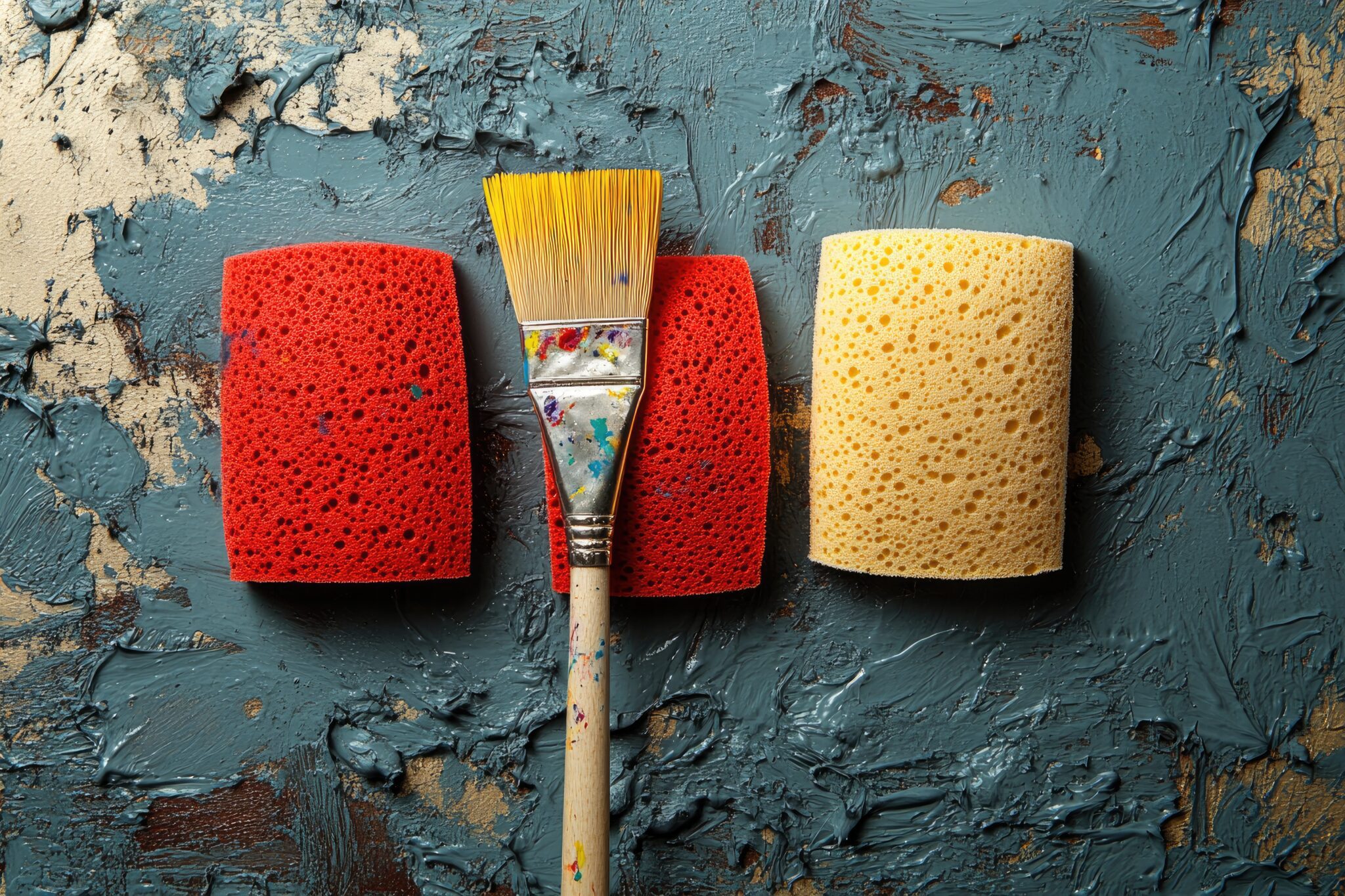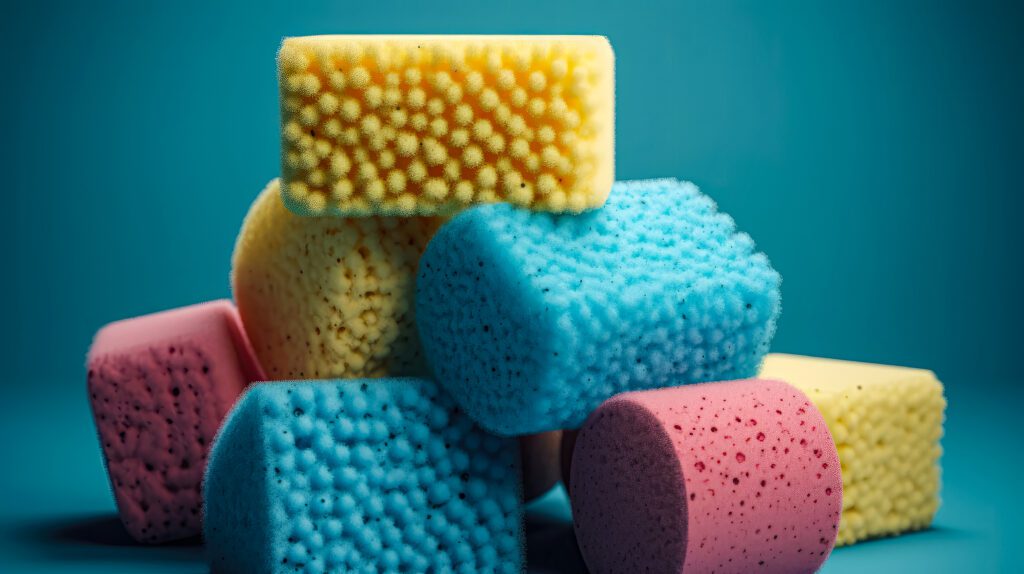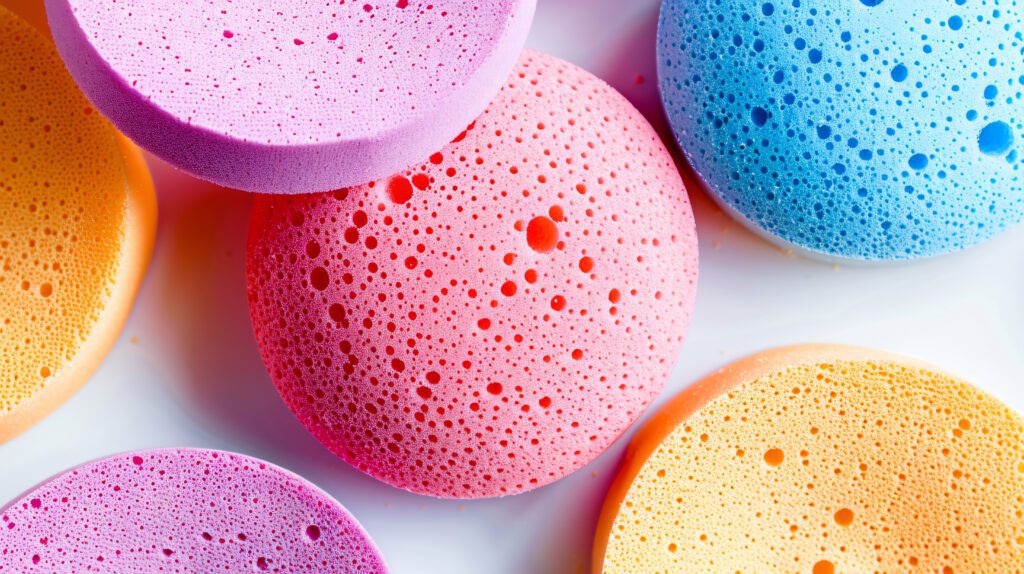As artists, we often find ourselves searching for new ways to add depth and interest to our work. In the realm of acrylic painting, the texture can transform a flat canvas into a vibrant masterpiece filled with life and movement. While traditional brushes have long been the go-to tools for applying paint, incorporating unconventional tools like sponges and rags into your painting process can open up a world of creative possibilities. In this blog post, we will explore the power of texture through these simple yet versatile alternatives and how they can enhance your acrylic landscapes.
1. Why Texture Matters in Acrylic Painting
Texture plays a pivotal role in the visual and emotional impact of your artwork. It adds depth, creates interest, and evokes feelings in the viewer. Here are some key reasons why texture is essential:
- Visual Interest: Texture breaks up the monotony of flat surfaces, making the artwork more engaging. It draws the viewer’s eye and encourages them to explore the painting’s details.
- Emotional Response: Textured surfaces can evoke different emotions. For instance, rough textures can convey harshness or struggle, while smooth textures may evoke calmness and serenity.
- Layering and Dimension: Acrylics are particularly well-suited for layered techniques. Utilizing texture allows you to add dimension and complexity to your work, creating a more immersive experience.
By understanding the importance of texture, artists can harness its power to elevate their acrylic landscapes.
2. The Benefits of Using Sponges and Rags
When it comes to creating texture in acrylic landscapes, sponges and rags can serve as powerful alternatives to more conventional painting tools. Here are some reasons to consider incorporating them into your creative process:
A. Versatility of Application
Sponges—whether natural sea sponges or synthetic ones—and rags offer a wide range of application techniques. They can be used for everything from broad washes to detailed stippling, making them incredibly versatile. Here’s how:
- Sponges: These porous tools can be used to create both soft, blended areas and sharp, defined textures. Whether you’re applying paint to create a sky or a rocky foreground, the sponge can adapt to your needs. Natural sponges offer unique patterns that can replicate textures found in nature, such as clouds or ocean waves.
- Rags: Old rags can be used for wiping, dabbing, or blending color on the canvas. They can help achieve soft transitions and seamless blends or add quick, rough textures to mimic natural elements like foliage or tree bark.
B. Unique Textural Effects
Using sponges and rags can produce unique effects that traditional brushes may not achieve. The random patterns created by dabbing or pressing these materials can add depth and character to your landscapes, resulting in an organic feel. For example:
- Ragged Edges: By using the edges of a rag, you can create ragged, soft edges that blend beautifully into the background.
- Stippling: A sea sponge can be dabbed lightly on the canvas to create a stipple effect that mimics clustered leaves on trees or the appearance of foliage.
C. Easier Cleanup
Using sponges and rags can simplify your cleanup process. Sponges can be rinsed and reused multiple times, making for easy maintenance. Rags can be discarded when they become too paint-saturated or can be washed and reused. This practicality encourages experimentation without the fear of ruining expensive brushes.
3. Techniques for Using Sponges and Rags in Acrylic Landscapes
Now that we’ve explored the benefits of sponges and rags, let’s dive into specific techniques that can amplify your acrylic landscapes.
A. Creating Backgrounds with a Sponge
One of the best uses for a sponge is in the background of your landscapes. Here’s how to do it:
- Choose Your Colors: Select a range of colors that will serve as the base for your sky or horizon.
- Dab to Build Layers: Load your sponge with the paint and gently dab it onto the canvas. Begin with lighter shades and gradually build up darker colors to create depth.
- Blend for Softness: Use different parts of the sponge to blend colors together. The natural texture of the sponge helps create smooth transitions, perfect for skies at dusk or dawn.
B. Texturing Foliage with a Rag
When painting trees, bushes, or other foliage, using a rag can help you achieve realistic foliage textures.
- Choose a Base Color: Start with a base color for the leaves or grass.
- Apply Paint with a Rag: Dip a rag in a darker shade of green or a different color, then dab it onto the canvas to create clusters of leaves. You can use twisting motions to mimic natural leaf shapes.
- Layering: Once the initial layer dries, you can add highlights by dabbing a lighter color with a clean rag over the top to create dimension.
C. Adding Details with a Sponge
Details can be effectively added using sponges for texture effects. For instance, when creating clouds or ocean waves, consider the following:
- Load the Sponge: Use a sponge to load dark and light tones onto your palette.
- Creating Effects: For clouds, dab the sponge with a white or light color over a blue background, layering until you achieve a fluffy appearance.
- Ocean Waves: To replicate the froth of ocean waves, use a dry sponge to dab white paint along the edges of your blue waves, giving the impression of crashing surf.
4. Experimenting with the Process
As you begin to experiment with sponges and rags, keep these tips in mind to maximize your creative potential:
A. Mix and Match Techniques
Don’t hesitate to combine techniques. For example, you can start with a sponge for the background and switch to a rag for detailing the foreground. Mixing different methods can yield rich textures and a compelling final product.
B. Keep an Open Mind
Art is all about exploration. Don’t limit yourself to traditional methods; treat this as an opportunity to discover new effects and ideas. When using unconventional tools, embrace the unexpected results that arise from experimentation.
C. Use Different Types of Sponges and Rags
Experiment with various types of sponges and cloth materials. Different textures will provide different effects, and you may find unique materials in your household that can serve as alternatives.
5. Conclusion: Embrace Your Creativity
Incorporating sponges and rags into your acrylic landscapes can significantly enhance the texture and dimensionality of your artwork. These unconventional tools give you a broader vocabulary for expressing your creative vision and help you achieve a beautiful, tactile outcome. Embrace these techniques as part of your artistic process, and you’ll find yourself continually inspired by the possibilities they create.
At Urart Studio, we invite artists of all levels to browse through our diverse selection of art supplies, including unique sponges and rags that can take your artwork to the next level. Don’t forget to explore our helpful painting tips available at urartstudio.com/painting-tips and our step-by-step painting instructions at urartstudio.com/step-by-step-painting-instructions. Let’s embark on this exciting artistic journey together!
Keywords: acrylic painting texture, sponges in art, unconventional painting tools, landscape painting techniques, creative painting techniques, mixed media art.
#AcrylicPaintingTexture, #SpongesInArt, #UnconventionalPaintingTools, #LandscapePaintingTechniques, #CreativePaintingTechniques, #MixedMediaArt





Leave a Reply
You must be logged in to post a comment.